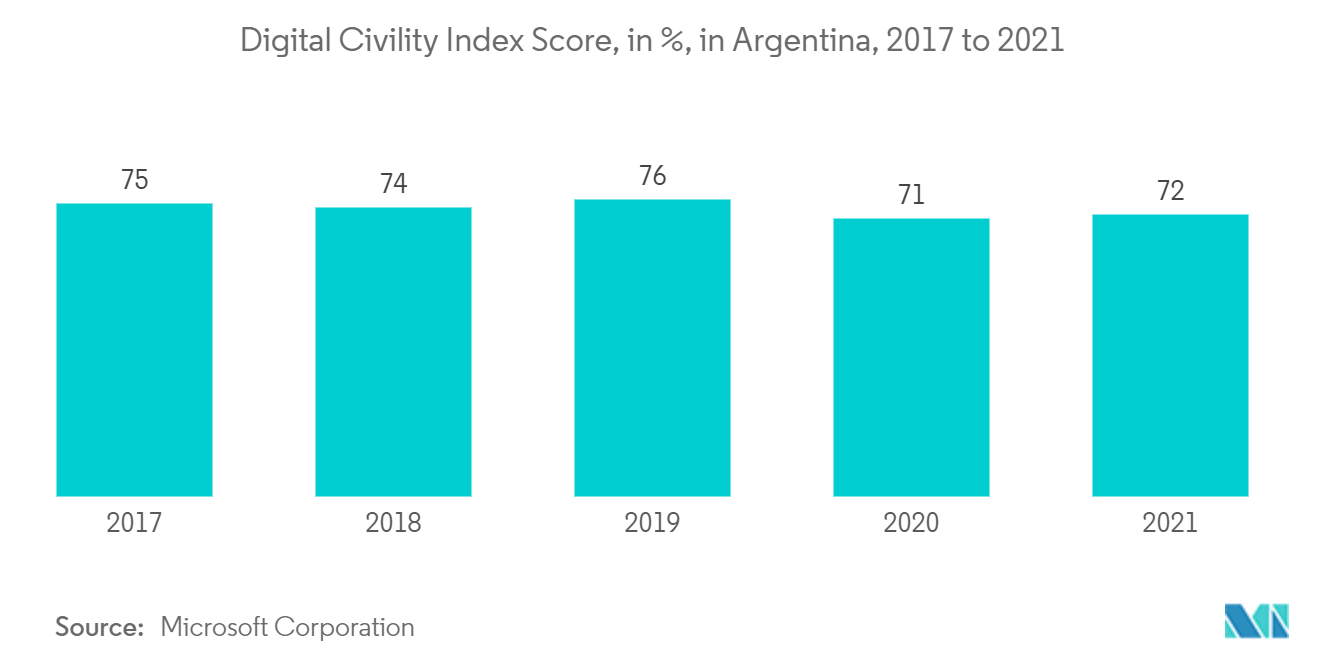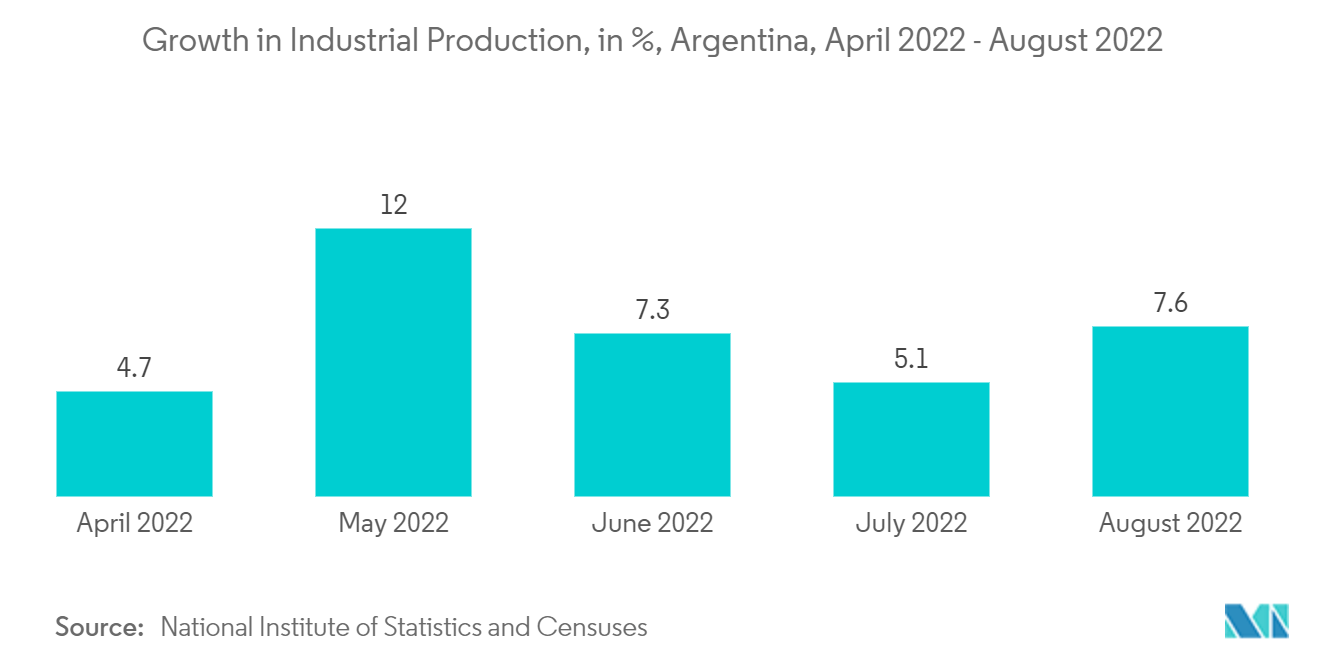Market Trends of Argentina Cybersecurity Industry
This section covers the major market trends shaping the Argentina Cybersecurity Market according to our research experts:
Threat Intelligence and Response Driving Market Growth
- According to Microsoft, last year, the digital civility index in Argentina increased by one percentage point to a rating of 72 out of 100. This indicates that the perception of civility in the South American nation has slightly dropped in online settings. It is preferable to have a lower score because it shows less exposure to internet threats.
- Digital technologies currently lie at the heart of every industry. The increased automation and connectedness have revolutionized multiple institutions; however, they have also brought potential risks in the form of cyberattacks. Threat intelligence is the ability that enables organizations to mitigate these attacks. Further, rooted in data, threat intelligence primarily provides context, such as who is attacking, their motivation and capabilities, and what indicators of compromise in the system to look for, which primarily helps make informed decisions.
- Currently, multiple industries in the region face numerous challenges that include rising persistent and devious threat actors, a flood of data full of extraneous information and false alarms across different, unconnected security systems, and a shortage of skilled professionals. Some organizations have been trying to incorporate threat data feeds into their network. However, they need to figure out what to do with all the extra data, majorly adding a burden to the analysts who may not have the right tools to decide what to consider and ignore.
- A cyber threat intelligence solution primarily addresses these issues. Advanced solutions use machine learning to automate data collection and processing, integrate with the existing solutions, take in unstructured data from disparate sources, and then connect the dots by providing context on indicators of compromise and the tactics, techniques, and procedures of threat actors.
- These platforms also provide a central place for security analysts to aggregate threat data, analyze and enrich this huge data to make sense of it, and create and memorialize the threat intelligence processes to better respond to threats and mitigate risk. These solutions can also optimize these operations by combining automation and orchestration to increase the security team's speed and efficiency while also providing confidence and validation through human intervention.

Manufacturing Sector is Expected to Increase the Adoption of Cybersecurity
- Every sector in the manufacturing industry, including the automotive, the various engineering disciplines, power systems, the consumer goods industry, and chemicals, have adopted digital technologies to increase overall operational efficiency and reduce production costs. M2M communication and networking have been on the rise due to the industries working toward data collection and using it for analytics to avoid downtime, keeping the manufacturing industry operational round the clock.
- Industrial equipment is built to last, with machinery being expensive, cumbersome, and costly to replace. Although IoT offers several positive facets to the industry, these innovations are often incorporated gradually within existing assembly lines, as gaps between legacy and modern industrial devices are prime targets for hackers.
- The workplace shift caused by COVID-19 has altered how work is carried out. With assembly lines being managed on the cloud or remotely, Internet usage increased exponentially. This transition, albeit necessary, was rushed due to the pace and intensity of the pandemic, leaving several companies needing to establish security guidelines for their machine operations.
- The convergence of operational technology and information technology impacts industrial control systems (ICS) security and supervisory control and data acquisition (SCADA) systems. The systems are exposed to increasing threats and targets for hackers involved in terrorism, cyber warfare, and espionage. Further, according to the National Institute of Statistics and Census, In the current year, industrial production in Argentina grew 7.6% compared to the previous year.
- Increasingly connected and automated industrial devices with wider networks of industry 4.0 offer broader surfaces for attack. Reliable industry 4.0 cybersecurity, smart manufacturing, and other industrial operations can help prevent the pipeline from stalling during an operation. Legacy devices do not have proactive real-time prevention and can serve as a foothold for attackers to propagate throughout the network. Older equipment augmented with connectivity generally needs more on-device monitoring capabilities to ensure IoT network security.


